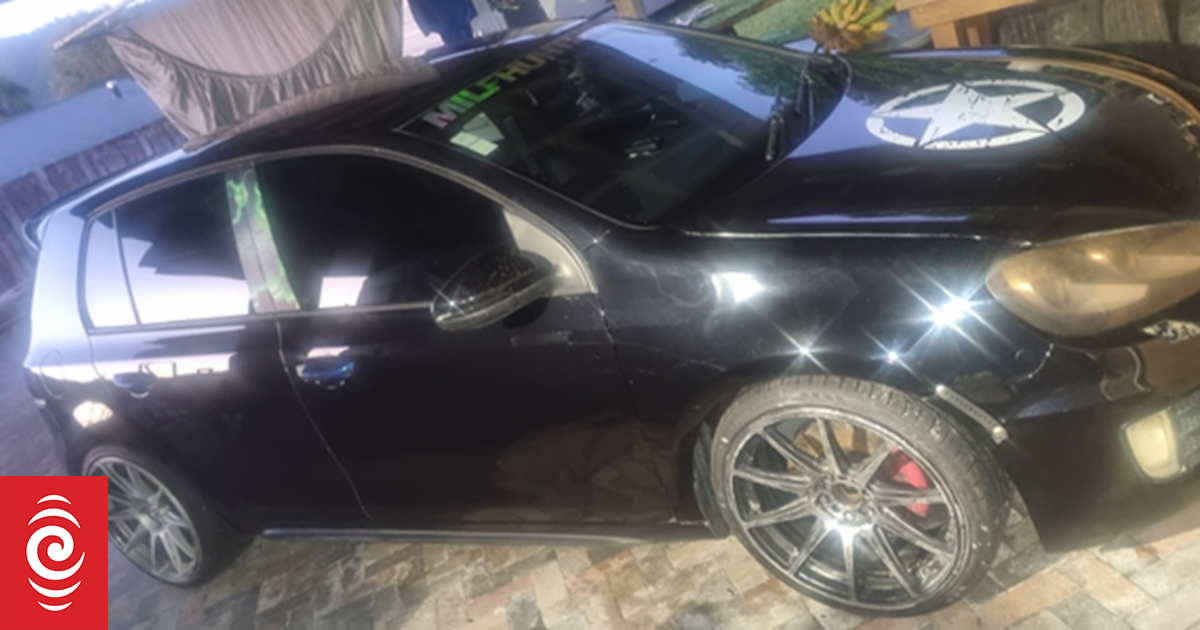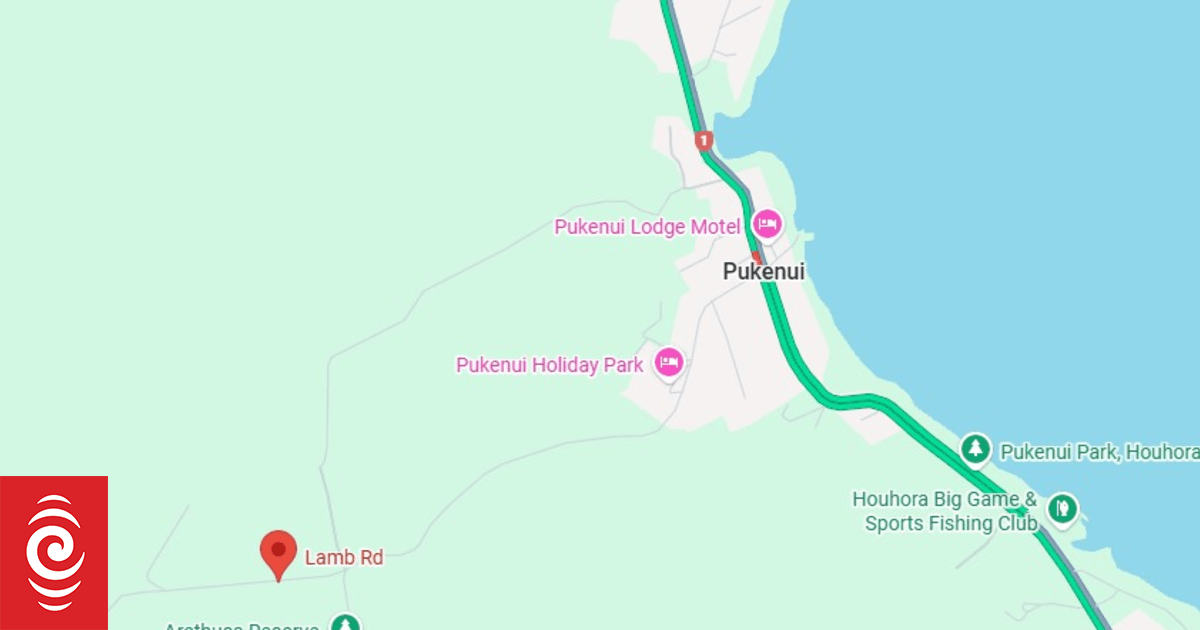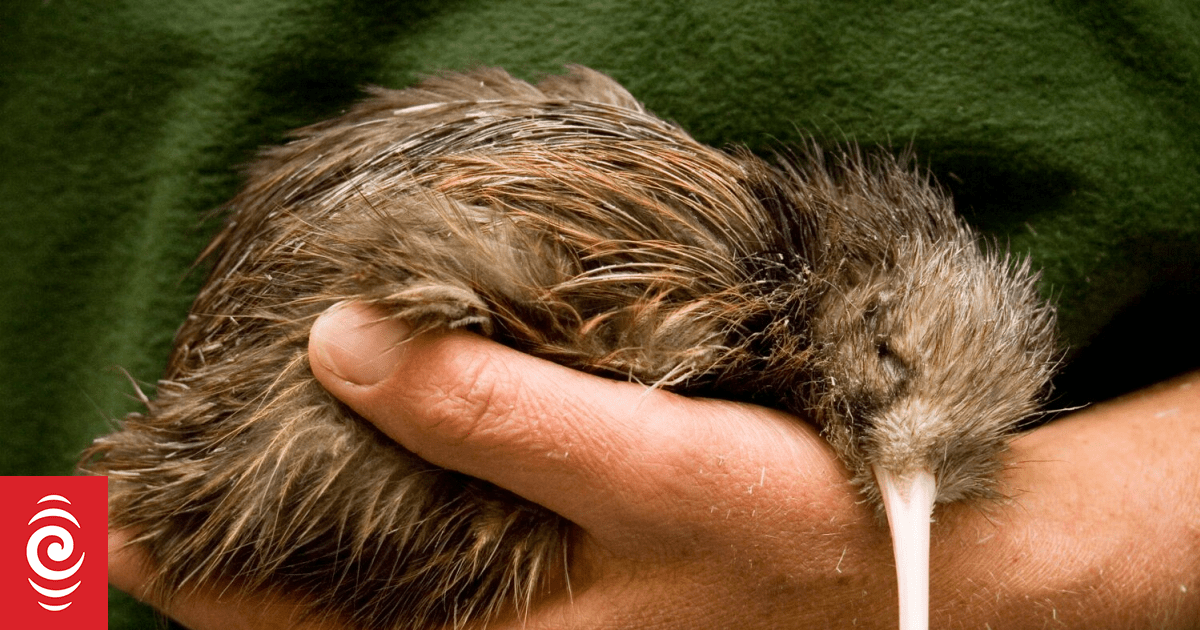
Transport Minister Simeon Brown, MPs, councillors and mayors celebrate the imminent opening of State Highway 1.
Photo: RNZ/Peter de Graaf
More than half a million hours of labour by 1200 workers, with an average of 150 on site each day.
Ten thousand cubic metres of concrete and more than 1300 piles driven up to 30 metres deep.
More than 850 days of closure triggered by 36 massive slips and a total repair bill of just over $200 million.
Those are just a few of the numbers associated with the biggest road repair job in Northland history – the reconstruction of State Highway 1 through Mangamuka Gorge, south of Kaitāia.
More than 60 people gathered on Thursday at Mangamuka Summit, the road’s highest point, to celebrate the project’s completion.

Carved pou were unveiled and blessed at either end of the gorge before dawn.
Photo: RNZ/Peter de Graaf
The highway’s two-and-a-half year closure forced motorists to take long detours, bumped up business costs, reduced visitor numbers, and cut people off from family members, shops and health services.
There was jubilation at Thursday’s ceremony, which started before dawn with the blessing of carved pou at either end of the gorge.
Later, Transport Minister Simeon Brown told the crowd – a mix of hapū, politicians, local leaders and road workers – the road was the lifeblood of the Far North economy.
He also reminded the rest of New Zealand that the region was eager to welcome back visitors.
“I’m just really excited for Northland. It’s a great day for the north and I want to encourage people who’re thinking about their holidays over the next few weeks to come north and enjoy the opportunity as it reopens.”

Dignitaries including, from right, Northland MP Grant McCallum, NZTA director regional relationships Steve Mutton, Transport Minister Simeon Brown and Far North mayor Moko Tepania, cut a ribbon to celebrate the opening.
Photo: RNZ/Peter de Graaf
Brown said he was thankful to the 1200 workers for their “tireless” efforts, and to Northlanders for their patience during the project’s setbacks.
“It’s been a really tough time for Northland. Obviously, there’s been the Brynderwyns, there’s been the Mangamukas, there’s been the power pylon which came down, incredibly unfortunate and avoidable.
“But this government has invested in Northland and we’re committed to making sure it’s connected to the rest of the country, so it can grow its economy and have those jobs which are so important.”
Tepania described the road as “the backbone of the Far North” and a lifeline for the 25,000 people living north of the Mangamuka Ranges.
Including a previous year-long closure, the highway had been shut for a total of three-and-a-half years of the five-and-a-half years he had been in local government.
Tepania said the reopening would also bring traffic back to Ōhaeawai, Ōkaihau and Mangamuka, towns along State Highway 1 that had been “really hurt” during the closure.
The project had created a great deal of local knowledge and capability, which would now be put to use elsewhere in the district – including on 39 critical slips, caused by Cyclone Gabrielle, that still needed to be repaired.
During the closure trucks were forced to use State Highway 10 around the east coast, while some local traffic used the back roads through Broadwood and Herekino to the west.
Both routes deteriorated significantly due to the extra traffic.
NZ Transport Agency acting chief executive Brett Gliddon said the agency was “absolutely” committed to repairing those routes.
“We couldn’t do a lot while SH1 was closed because it would have caused more disruption. We’re spending about 50 percent more on maintenance in Northland this summer season, and now we’ve got SH1 open we’ll put our focus on SH10 in particular to bring that back up to where it should be,” Gliddon said.

A small group of protesters call for action on climate change, which they say destroyed the road.
Photo: RNZ/Peter de Graaf
A small group of protesters calling for action on climate change was waiting to greet dignitaries as they arrived at the northern side of the gorge.
Janine McVeagh, of Rāwene, said the effects of climate change had destroyed the road and cost the country $200m to fix.
“That’s just the beginning. It’s going to keep happening unless we do something about it. We shouldn’t back out of our moral responsibility to reduce climate change, it’s just too expensive,” she said.
The 13km stretch of road through Mangamuka Gorge was severely damaged during a storm on 18-19 August 2022, just 13 months after a previous year-long closure.
The following year brought record-breaking rainfall and increased the number of major slips from 15, of which six were deemed to be critical, to 35, with 15 of those critical.
The fresh damage increased the repair cost from the initially allocated $100m and delayed the reopening from the original target date of May 2024.
Another significant slip in June this year took the total number to 36.




